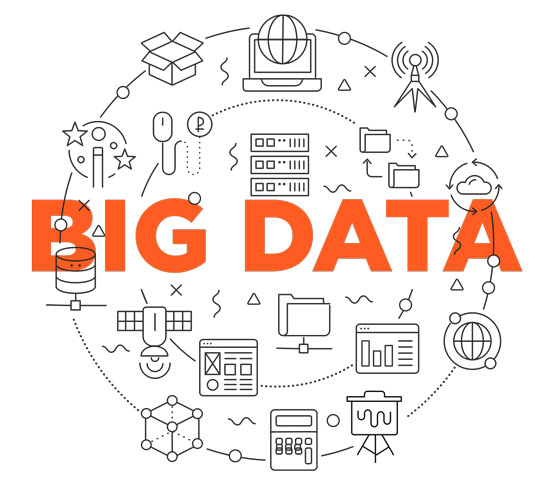Big Data and Big Data Analysis has become a concept that we hear about more frequently. Although it has existed for years, it recently emerged at the forefront of advanced technology.
Big Data and Big Data Analysis are very effective in extracting social decision mechanisms and making statistical predictions based on mass data. Every individual within a society contributes to big data without realizing it and supports the formation of big data. We support this phenomenon as well as contribute to providing continuous data flow to this medium which we call “Big Data”.
Big Data
Big data, which can also be called a data set, has become more diverse with the advancement of technology and increased data usage. Using the information on the internet, software companies believe that research and development (R & D) studies will provide valuable data. Within the framework of these studies, the following understanding emerged; the information in many sources, such as shares, made on social media, photo and video archives, log records can be processed and made meaningful.
Big Data and Data Classification
What is important in big data studies is the classification of data. Unclassified data is difficult to transfer. Although companies try to classify the data they have, some of the data cannot be carried out and therefore all of the data in the database cannot be transferred to the usage area. Companies have seen that the software used to report their customers’ photos, videos and photos on social media shares such as Facebook, Instagram is inadequate in the classification studies. This data, which is useful, can now be transformed into valuable data with the help of big data.
Big Data Components
There are 5 components that make up big data known as the 5V’s:
- Variety: Data from different environments and structurally different formats must be integrated and convertible.
- Velocity: The production speed of the data constituting the big data increases with each passing day. Therefore, there is an increase in the number and variety of transactions in which that data will be used. For software and hardware, this load must be removed.
- Volume (Data Size): Predictions should be made on how to use and classify rapidly increasing data.
- Verification: This component focuses on the reliability of rapidly growing and reaching data.
- Value: The value of the data, filtered by the above components, is considered for the company.
Big Data Analysis
Big Data Analysis, also known as predictive analysis, is a kind of data mining and it is based on statistics, modeling, machine learning and artificial intelligence. These components are used in the analysis.
In the data analysis method used by large companies;
- Structured
- Unstructured
There are 2 data types. Structured data are concrete and easily classified. For example, age, sex, city of residence is structured data; whereas, social media comments, and notes left by customers to call centers, are unstructured data. This data is processed by big data analysis and afterwards, predictions are made about what may arise in the next steps.
In which fields is Big Data Analysis Used?
Big data analysis is used in many sectors and provides companies with significant ease of work:
- Customer Relationship Planning: With this software, companies in the marketing business form their customer relations and sales strategies.
- Preventive Health: Certain chronic diseases can be identified, and new treatments can be developed with Big Data Analysis. Physicians can develop treatments by evaluating these results.
- Industry Applications: Big data analysis is mostly used in financial services, banking, insurance, marketing, communication, health, travel, retail and petroleum sectors.
Most Popular Big Data Software
There is various software that perform the sorting and transfer of data to the field of use. Here are the most popular of this software:
- Microsoft R
- Oracle Data Mining ODM
- Microsoft Azure Machine Learning
- RapidMiner Studio
- GMDH Shell
- IBM Predictive Analytics
- Statistica
- Anaconda
